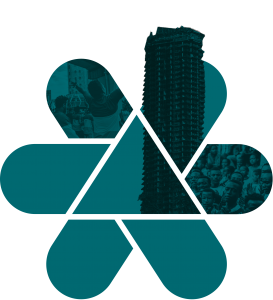Hivos supported art and culture programs which questioned dominant power structures in society, created alternative narratives, and imagined new realities.
Download case study
For more than 20 years Hivos has supported the arts and cultural sector, because they believe that art has the power to question the dominant powerful structures in society, create alternative narratives, imagine new realities, and bring about progressive social change.
As part of their response to the growing trend of the shrinking of space for free expression, Hivos developed the Resource of Open Minds (R.O.O.M.) Program to support artists, culture and media producers, to create critical work and freely express their views on social issues and injustice, and share this content in different contexts. Through the R.O.O.M. Program, Hivos aims to diversify dialogue and debate in society through thought-provoking and critical audio-visual productions that question harmful practices, stereotypes and injustices. The R.O.O.M. Program works with critical makers who “strive for openness and lead the resistance against the shrinking civic space”.
Balancing scale and creativity
Given their size or model, content creators and creative hubs cannot cope with large grants or burdensome policies and procedures. In order to support these actors, Hivos staff have had to learn how to operate like an incubator, developing alternative, lean procedures to suit the nature of their partners and balancing growth and sustainability with the makers’ needs to be fast-moving and creative. This is more akin to supporting social movements then traditional CSOs, and the capacity-building strategies employed by the R.O.O.M Program are fundamentally different to those Hivos uses when engaging with other organisations. This form of solidarity and support requires a tailored approach depending on the needs of each partner, and rather than focusing on stability and procedures, it looks at independence, content and criticality (i.e. how makers can create art not just for art’s sake, or for commercial purposes alone, but instead art that is geared towards creating change).
Bringing makers together
Many creators have chosen commercial routes for their content, as that is where the money is, and it can be difficult to untangle the narrative of entrepreneurship and innovation, and encourage thinking around critical content that seeks to spark dialogue and debate. There is also natural competition amongst makers, and so solidarity is not always easy to nurture.
Gender divide
How can you actively encourage young women to enter the fray around freedom of expression and critical content creation in spaces dominated by men with a culture of exhibitionism of the female body, i.e. online platforms and social media? It is hard to tackle this issue given the nature of algorithms, however the R.O.O.M Initiative is trying to support more women by giving grants and building capacity to women makers, and by including gender training in workshops for creative hubs.
Be patient
Changing narratives and norms is not measurable in the short-term, and these initiatives will not always have an immediate impact. However, the mid- to long-term future will show the effects of a new tech-aware generation of content creators.
Class divide
As well as an unsurprising rural/urban dichotomy around internet access, Hivos has noted a divide between different urban neighbourhoods. Existing creative hubs tend to be situated in more central areas, and are not necessarily accessible to poorer young people from other areas of cities. Hivos has therefore tried to support hubs and spaces in poorer neighbourhoods, in close proximity to artists from marginalised communities, in order to create access and community for more young makers.
Different way of working
Hivos has had to learn how to frame the R.O.O.M Program in an appropriate way, so that makers feel able to apply for support, and are not put off by traditional CSO language or frameworks. It has also been very important to communicate that makers are not being invited to create something in service of INGOs, driven by a foreign agenda, but are being invited to create what they value as critical content, with independence and with freedom.
-
Makers become more self-sufficient – With financial support and capacity-building around finance, management and professional organisational skills, content creators are better positioned to apply to other funders and therefore maintain their independence. Hivos is often a seed-funder or an early-stage supporter, supporting makers to become less reliant on commercial assignments. In this sense, the R.O.O.M Program acts as an incubator for small and emerging initiatives, thanks to its holistic, tailored support.
-
Makers create more critical cultural and media productions – As the R.O.O.M program enables makers to better balance and distinguish commercial work from editorially independent, critical content, makers have been free to produce documentaries, feature films, podcast series, artworks, animations, music pieces and books. Through these productions, content creators have been able to challenge repressive social norms and tackle specific areas of civic space that have come under threat, by leveraging online space for dialogue, debate and dissent. Capacity-building support and networking opportunities facilitated by R.O.O.M. have helped partners reach wider and more diverse audiences with their productions.
- Makers have access to safe, well-resourced spaces – Hubs and studios supported by R.O.O.M are able to facilitate the productions of more makers, because of increased capacity, new tools and services, and more inclusive community-building. This capacity is developed with support from Hivos, for example, via the Creative hub leader’s toolkit (produced by Hivos, Nesta and the British Council). As well as providing services such as internet access and workspace, these hubs represent physical safe spaces where young creators can feel safe from harassment, and feel a sense of community and support that directly affects their creative process. These spaces also act as platforms and knowledge-generators for key issues affecting all young content creators, such as surveillance capitalism, or ‘who owns the Internet’ across Africa?